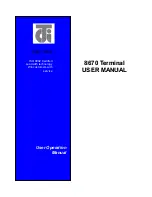
18
TERMINAL CONNECTIONS...
A door lock can be controlled via the programming
of the TR
-
1000 terminal. This means that after a valid swipe, the relay will activate for a
pre
-
determined period of time and the lock will fire allowing access.
LOCK INFORMATION...
Several types of lock can be used in Access Control
Systems. The type most commonly used involves replacing the standard strike plate of a
self latching lock. The replacement strike plate has an internal 12 volt DC operated lever
which either jams (fail open), or releases (fail closed), the strike mechanism when the
voltage is applied. Controlled locking is then possible.
The strike plates should be installed by Carpenters or Locksmiths, who will also need to
route the lock cable back to the TR
-
1000 terminal. When selecting a lock it is important to
take into account its current consumption. Magnetic locks in particular, can have a high
current consumption. An external power supply may be required for the TR
-
1000 terminal
to be able to control a door lock.
FAIL OPEN LOCK...
The fail open lock will leave a door unlocked when the power
supply cuts out. This means that power is continuously applied to the door to prevent the
mechanism from opening. When a valid card is swiped, the TR
-
1000 terminal cuts power
to the lock and the door can be opened. If power fails unexpectedly, the lock is also
released, to leave the door unsecured. This type of lock is suitable for the internal doors
of a building. A break glass may be fitted for emergency use.
Door Lock
External Power
Supply
NC
COM
0V
+V
A fail open lock utilising an external power supply connected
to the rear of TR
-
1000 terminal
CONNECTING A LOCK TO THE TERMINAL







































